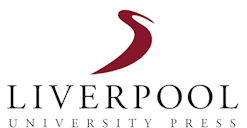Those who are perpetually boasting about the greater Ireland beyond the sea ought to bear in mind that there are two Irelands beyond the sea.
Belfast News-Letter, September 29, 1886
About one in ten people in the US claim Irish ancestry, so it’s little wonder that the US is often called “the other Ireland beyond the sea”. While the Irish homeland was deeply divided between predominantly Catholic nationalists and Protestant unionists throughout its modern history, the recent behaviour of the US Congress suggests “the other Ireland” is not impartial.

Senior members of Congress representing both main parties have pledged to block any trade deals between the UK and US if Brexit threatens the open border between Northern Ireland and the Republic of Ireland. This favours the position of the Republic and Irish nationalists over that of the Democratic Unionist Party (DUP), which fears the proposed “backstop” to ensure the border stays open will cause a rift between Northern Ireland and the rest of the UK.
Yet despite the common image of Irish-Americans as a Catholic group, many of those with Irish heritage are actually of Protestant Scots-Irish descent. So why does there seem to be so little sympathy for Protestant unionist concerns within the US establishment? The answer can be found in the history of the Home Rule movement more than a century earlier, when unionist attempts to rally Irish-Americans failed.
A false dawn for unionists
The Irish Home Rule movement between 1880 and 1920 saw Irish nationalist leaders such as Charles Stewart Parnell, Michael Davitt and Éamon de Valera journey to the US to target the large Irish diaspora there. They asked for campaign funding, manpower and for Irish-American pressure on the British government to give Ireland a devolved parliament.
Ireland’s unionists were suspicious. Not only were they largely opposed to home rule, but many also saw the influence of Irish-American nationalists as inherently militaristic and radical, favouring complete separation of Ireland from Britain instead of devolved power through home rule.
However, unionists also sought support and legitimacy across the Atlantic. During visits from prominent unionist politicians such as William Johnston, Irish-Americans were courted with flattering speeches about the strength of Protestant institutions and the cause of “religious liberty” in both their countries.
But they encountered a problem. Many Protestant Irish-American families had arrived in the 17th and 18th centuries. Their connection to the Irish homeland was much more distant than that shared by the majority of Catholic Irish-Americans, who tended to be more recent immigrants.

Even those who joined groups explicitly celebrating Protestant Scots-Irish heritage emphasised the distant past and how they’d assimilated, claiming that they were on par with the Puritans of New England in their contribution to the founding of the American republic.
Read more: How Brexit is leading a resurgent Irish American influence in US politics
By the mid-19th century, those claiming Scots-Irish ancestry held a diverse range of views and positions. Some were prominent members of anti-immigrant and anti-Catholic groups. Others expressed anti-British, republican sentiments inherited from the traditions of the United Irishmen.
They used their heritage to assert a distinction from Catholic Irish immigrants, underscoring their ultimate loyalty to America. Many in Scots-Irish groups accused Catholic Irish-Americans of being loyal to a foreign government. But because of their political diversity, Irish unionists struggled to summon the Orange Ireland beyond the sea.

This divergence of Protestant Irish-Americans from their unionist cousins across the Atlantic continued through the course of the 20th century. As a result, unionist political parties in Northern Ireland have held an uneasy relationship with the US.
It was most notable during the negotiation of the 1998 Good Friday Agreement which ended the Troubles, and in which the Clinton administration played a key role. The DUP was the only major party within Northern Ireland to oppose the agreement, which maintained an open border in Ireland was key to lasting peace.
This history helps explain why, as the US continues to intervene in Irish politics as Brexit looms, any efforts of unionists to rally Irish-Americans seem forever destined to fall flat.
Two Irelands beyond the Sea: Ulster Unionism and America, 1880-1920

